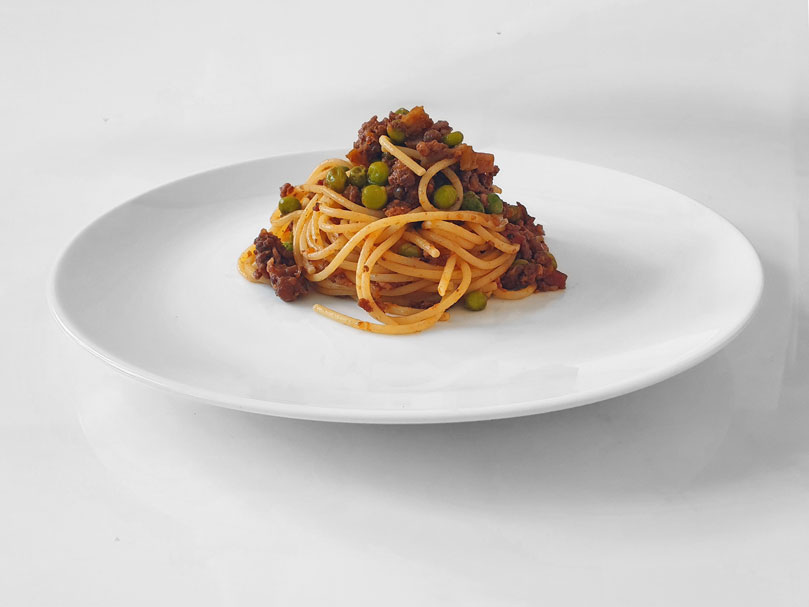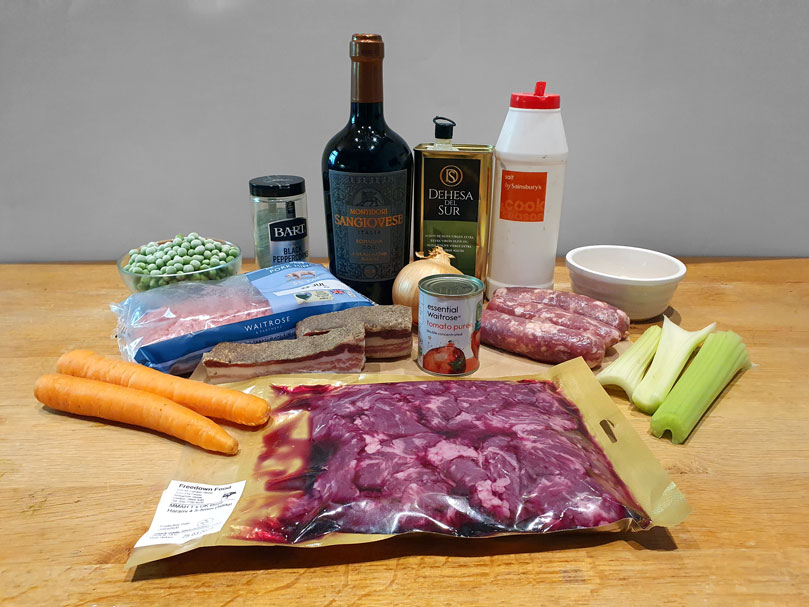
Spaghetti bolognese
We’ve already sampled the delights of our very own interpretation of a jar-born spaghetti bolognese. Comfort food at its very best!
However, Bologna has become famous for a dish it did not invent. According to the vast majority of northern Italians, bolognese should never, under any circumstances, be mixed with spaghetti.
The rise in popularity of spaghetti bolognese everywhere except Italy prompted a rise in ferocity of Italian scorn on the subject.
However, there was a growing subculture of Bolognans who could no longer turn a blind eye to all the spaghetti bolognese bashing. It did exist in Bologna and it had done for centuries.
Amongst the most vocal of these spaghettiphiles was one of Bologna’s own, Piero Valdiserra, who not only had evidence for its existence but also had personal experience of eating the dish with his family.
In 2016 a new collective was formed, headed up by lawyer Gianluigi Mazzoni and chef Stefano Boselli, aimed at putting spaghetti bolognese back on the menu:
Neither Valdiserra nor il Comitato make claims of spaghetti bolognese being a replacement for tagliatelle al ragù alla bolognese. Quite the contrary. If you’re given a choice, take the latter. “Choice” being the key distinction here though, because spaghetti bolognese was historically peasants food.
Peasants didn’t eat tagliatelle every day of the week. That was the reserve of noblemen. To the city’s poor tagliatelle was a treat, saved for holidays and, if the lira allowed, as a Sunday family special. At any other time, a ragù would have been cheap, cheerful and mixed with durum wheat spaghetti.
Ragù
The ragù for spaghetti bolognesi is like an inverted version of the official ragù. Rather than being beef mixed with some pork, we’re given pork mixed with some beef.
There’s good reason for this. Pork has traditionally been a cheaper meat in northern Italy and we can associate its inclusion in this dish with austerity.
Pancetta, pork mince and sausage meat shout over the top of what little beef is present in this ragù. The beef, by the way, is the hard to find outside skirt of beef (a.k.a. cartello di manzo or harami) that we had such a hard time finding for our official tagliatelle al ragù alla bolognese.
The most surprising ingredient, however, is the peas which we’re asked to cook down with the ragù for two hours. It’s fair to say I was a little sceptical of their inclusion under these instructions!
Taste
The finished dish tastes great. After a long slow cook it was surprising to me how good the peas presented themselves - not the best texture but they had given a lot to the sauce and taken just as much back. It’s hard to determine where the sauce stops and where the peas start.
The dish is also very dry. The mix of pig and cow fats with the mild acidity from the wine and tomato paste more like a salad dressing than the bolognese ragùs I’d grown up with.
How much you enjoy spaghetti bolognesi will come down to how much you enjoy your pork. I thought the dish was excellent, but it did confirm my preference for a beef laden bolognese!
Click here now to read the full The Bolognese Story!
Ingredients
Serves 6
The ragù can be refrigerated or frozen, the pasta can be stored in a cool place for a couple of days or refrigerated or frozen as pasta dough.
Ragù (serves 6)
- 200g pancetta
- 300g Italian style sausages (3 thick sausages)
- 300g minced pork
- 200g outside skirt of beef (aka cartello di manzo, aka beef harami)
- 300g frozen garden peas
- 3 tablespoons tomato paste
- 2 medium carrots
- 3 celery stalks
- 1 medium onion
- 30g unsalted butter
- 250ml Sangiovese red wine
- ¼ teaspoon pepper
- Salt
Spaghetti (serves 4)
- 400g Garofalo “spaghetti 9” or alternative Gragnano spaghetti
- 40g salt

Directions
Ragù
- Begin by preparing the meat. Slice the outside skirt into small chunks with a knife three pieces at a time. Once sliced, mince with a mezzaluna and set aside. Repeat for the remaining pieces of the outside skirt.
- Slice the panceta into lardons, then mince with a mezzaluna in small batches. Set aside.
- Score the outside of the sausages with a sharp knife and remove the skin. Crumble the sausage meat into a bowl and set aside.
- Finely slice the onions, carrots and celery, then combine and mince with a mezzaluna to form a soffitto.
- Add 30g of butter and 3 tablespoons oil to a pan and bring to a medium heat.
- Add the soffritto to the fat and fry on a medium to low heat until soft (about 10-15 minutes).
- Add the minced pancetta and fry until the meat starts to crisp1.
- Add the sausage meat, pork mince and minced outside skirt and fry until brown2.
- Pour over the wine and cook for one and a half hours on a low heat until the wine has mostly evaporated3.
- In the meantime, prepare the tomato paste by combining the paste with 50ml hot water. Mix to form a sauce.
- Combine the ragù, tomato paste and frozen peas and stir until well dispersed.
- Once the pan is brought back to heat, check for seasoning and add required salt and pepper.
- Continue to cook on a low heat, uncovered, for 2 hours. Stir regularly.
Spaghetti
- Cook 400g of Gragnano spaghetti in 4 litres of water seasoned with 40g salt, until al dente (about 9 minutes).
Assembly
- Drain the spaghetti through a colander, ensuring that all the water has been drained and none has collected within the colander.
- Mix the spaghetti and ragù in the pan and, when well mixed, serve in 4 bowls.
Cook’s notes
Ragù
- Following il Comitato’s recipe will make the crisping of pancetta in a moist pan of soffritto difficult. If you want extra crisp pancetta as has been discussed in other recipes, feel free to fry the pancetta in a separate pan and combine once crisped.
- You will need to break down chunks of minced meat and combine well. There is quite a bit of work involved here and you need to be careful not to accidentally eject this content of meat from the pan while working.
- The desired effect is to end up with a dry and oily ragù and so low and slow is the way to reduce the sauce.